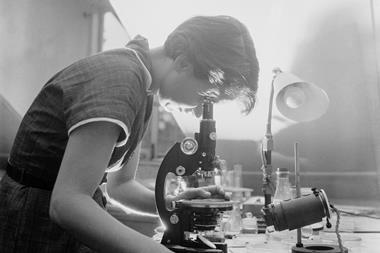Examining how science excludes women and other underrepresented groups
It’s not widely known that ’history’s first chemist’ was a woman. Her name was Tappūtī-bēlat-ekalle, she lived in ancient Assyria, and was the head perfumer of an established professional group of female perfumers circa 1230 BCE.1 Tablets have been discovered with her recipes for perfumes which outline, among other things, how to conduct basic chemical processes such as heat extraction and filtration.
Looking back on women’s history month, I’ve been thinking of the multifaceted ways that this commemoration can promote the equality of women, especially within chemistry. Bringing forward the stories of women like Tappūtī-bēlat-ekalle helps illuminate the fact that female chemists have been persistently neglected. Simply informing the general public about such historical details is valuable in its own right as it helps us to review our preconceptions about women’s presence in chemistry. However, it also reveals another issue: why haven’t such stories been incorporated in the standard histories of chemistry and in teaching textbooks? In turn, this prompts another question. On what grounds should we recognise specific actors in the historical reconstruction of a field? Is there a good reason why Robert Boyle is celebrated as the father of chemistry, while Tappūtī-bēlat-ekalle is largely overlooked?
Who counts?
Such questions do not have a simple answer as they require identifying the criteria by which we identify someone as historically important. For example, does the discovery of a new chemical fact suffice? Does one need to hold some academic or research position in an established institution, or produce a substantial amount of highly cited publications? Are Nobel prizes or other prestigious awards good indicators? Or, does one need to be active in their scientific community, taking part in international conferences, editing or reviewing in scientific journals, acquiring funds and so on?
The further back we go into the history of chemistry, the harder it is to apply such criteria. Nevertheless, even in cases where they can be applied, we see that the role of women in chemistry is not recognized in the same way as those of men. There are several examples of women who contributed to scientific research but were not acknowledged as their husbands or supervisors took the credit. Marie Lavoisier is a case in point. There are others who – despite their novel work – did not acquire an academic position, were only offered administrative or secretarial positions, or received lower pay than their colleagues. The biochemist Gerty Cori is one such example. Universities only wanted to hire her husband Carl, despite the fact that they worked together and jointly earned a Nobel prize. Eventually they settled with Washington University School of Medicine which offered her husband the chair of pharmacology, and to her the role of research assistant. Also, there are cases of plagiarism (Rosalind Franklin’s experience being a characteristic example) where publications or research results were attributed to figures that held higher positions of power.
Highlighting exclusion
Such stories help us understand the precise ways by which women and other under-represented groups of people have been either neglected or excluded from scientific practice. In general, this discussion forms part of the so-called ‘critic of science’ which is pursued within the feminist history and philosophy of science. This field was established after the second feminist wave (ie around the 1970s) and illuminates the different ways by which women (and consequently other minority groups) have been persistently undermined within science. This includes examining the ways by which science maintains sexist prejudices in its theories and practices, as well as the ways by which it is invoked to establish the inferiority of women.
Things are not as bad as they once were. Nevertheless, scientific practice is still structured in such a way that persistently excludes women from science. For example, the existing culture of determining academic success in terms of the h-index (which measures the number of citations per publication) undermines many women – especially mothers – in their ascent to higher academic positions. This is because women are more likely than men to take professional breaks for reasons such as maternity leave, resulting in lower h-indexes.2
By all this, one should not infer that the entire history of chemistry as it is presented in its current form is completely misguided or false. The aim is to contribute to a more balanced and fair history, and to overcome existing prejudices against under-represented groups of people. Whether we like it or not, it is still hard to work as a chemist for a woman, a person of colour, or as an LGBTQ+ individual. Commemorating women in the history of chemistry every March is a valuable opportunity to acknowledge and overcome this, not just for the benefit of these under-represented groups but also for the benefit of chemistry itself. After all, as James Clerk Maxwell once put it, ’in Science, it is when we take some interest in the great discoverers and their lives that it becomes endurable, and only when we begin to trace the development of ideas that it becomes fascinating’.3
References
1 H Wills et al (Eds.), Women in the History of Science: A sourcebook. UCL Press, 2023, p.15
2 A R Larson, JAMA Netw Open, 2021, 4, e2112877 (DOI: 10.1001/jamanetworkopen.2021.12877)
3 J Read, Through alchemy to chemistry: A procession of ideas and personalities. London: G. Bell and Sons ldt, 1957, p. xiii

















No comments yet